Costa Cruises
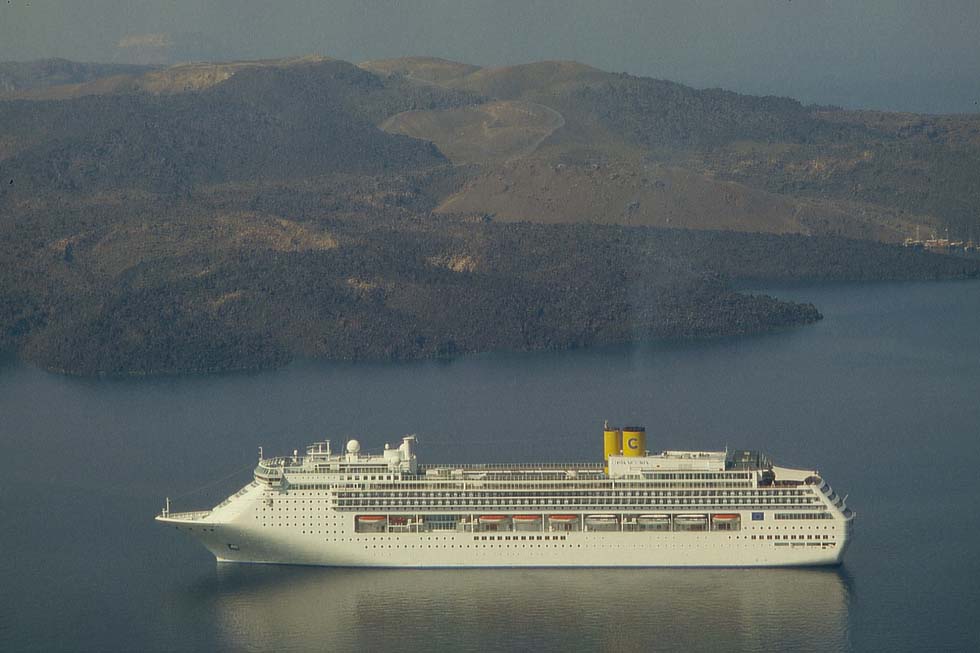
“Costa Victoria”, Santorini 2007 (WS)
The history of Costa Crociere or Costa Cruises goes back to the time when the entrepreneurs Costa of Genoa founded a cargo line. In 1948 they entered passenger traffic with the “Anna C” and in the 59s the name Linea ‘C’ became known. With the jet age their South Atlantic traffic declined and the modern “Eugenio C” (1966/30,567 gt) as well as the “Federico C” (1958/20,416 gt) changed to cruises. The latter became in 1983 the “Royale” of Premier Cruise Line, then the “Seabreeze I” of Ulysses Cruises. The “Enrico C” (16,495 gt, ex “Provence”) and the “Carla C” (19,975 gt, ex “Flandre” of French Line) joined the Costa cruise business. The ABC Shipping Guide of 1978 listed also the “Leonardo da Vinci” and the “Angelina” for Costa.
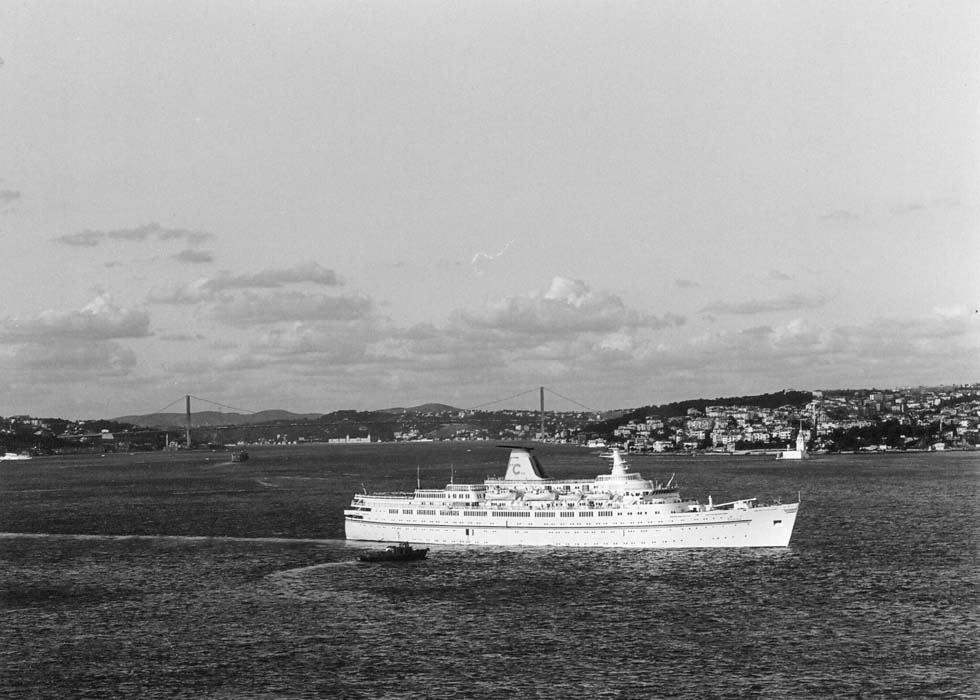
“Danae”, sister of “Daphne”, Istanbul 1983 (WS)
There were other ships cruising, too. The oldest one was the “Franca C” of 6,822 tons, built in 1914 as “Medina”, alive still in the 21st century as “Doulos” of the organization Gute Buecher fuer Alle. A nice ship, chartered in 1978, was the “World Renaissance” (1966/11,724 gt), the former “Renaissance” of France, which continued her career with a South Africa service, then as “Awani Dream” in Indonesia and as “Blue Monarch” in Greece. A matter of history was also the “Columbus C”, the former “Europa (37,012 gt) of Hapag-Lloyd, ex “Kungsholm” of Svenska Amerika Linjen. She sank in 1984 after hitting a breakwater at Cadiz. One year before, the “Guglielmo Marconi” was acquired, becoming the “Costa Riviera”. That 30,000-ton ship had been built in 1963 for Lloyd Triestino. The nice motor-ships “Danae” (10,501 gt, ex “Port Melbourne”, “Therisos Express”) and her sister “Daphne” (ex “Port Sydney”, “Akrotiri Express”) had been cargo-passenger ships, in Greece then rebuilt for Delian Cruises. In 1977, still before becoming acquired by Costa, “Daphne” was the first ship since 1961 to go from the United States to Havana, jazz legend Dizzy Gillespie on board. “Danae” and “Daphne”, given away in 1990, survived until the 21st century. From 1996 the “Daphne” even had a short interlude on the Swiss market, baptized “Switzerland”. In 2008 the sisters were once again united as “Princess Danae” and “Princess Daphne” of Classic International Cruises, built up by Lisbon-based Greek ship-owner George Potamianos, then continuing cruises on charter basis. An interesting fate had also the 12,000-ton “Italia”, built in 1967 for Sunsarda, chartered by Princess Cruises, in 1973 acquired by Costa for cruises out of Puerto Rico, and then, after changing name and operator more than half a dozen times, running aground on the Amazonas, suffering an engine breakdown in the Aegean, cruising for France Croisieres in the Indian Ocean and in the 21st century as “Sapphire” of Louis Cruise Lines.
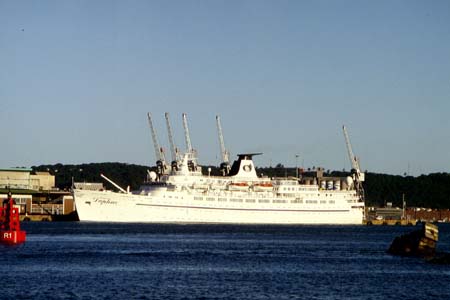
“Princess Daphne”, the former “Daphne” of Costa, Durban 2009 (WS)
|
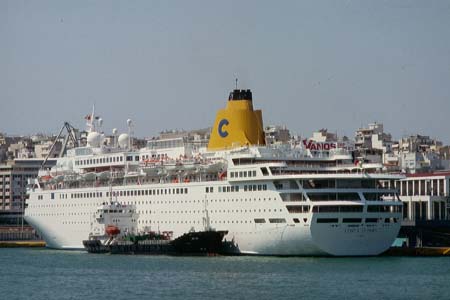
“Costa Europa”, the former “Homeric”, Piraeus 2008 (WS)
|
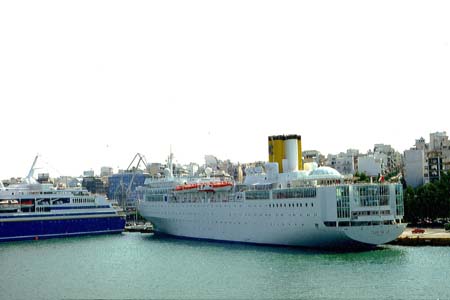
“Costa Marina”, ex “Italia”, Piraeus 2003 (WS)
|
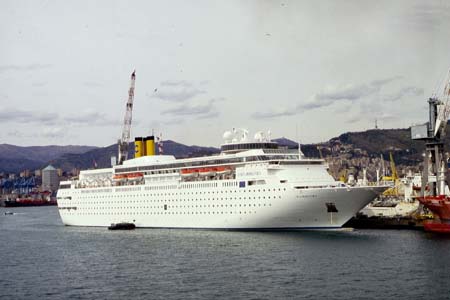
“Costa Romantica”, Genoa 2009 (WS)
|
In 1993 Costa took control of the French company Paquet Cruises, successor of Nouvelle Compagnie de Paquebots, thus becoming the biggest European cruise ship operator. Their “Mermoz” (12,460 gt) of 1957, once the “Jean Mermoz” of Fraissinet, continued service until 1997. The “Pearl” (12,475 gt) had been the “Finlandia” of 1967, which after half a dozen changes of name became the “Costa Playa”, sold in 1998.
A renewal of the fleet was started in 1990 and 1992 when the “Costa Marina” (25,441 gt) and “Costa Allegra (28,430 gt) were put in service. Originally they had been container ships, rebuilt into cruise ships by Mariotti yards of Genoa. Architect Guido Canali re-invented the classic strait funnels, thus creating the future trade mark of Costa. The ships were followed by the “Costa Classica” (c. 53,000 gt) in 1991 and her sister “Costa Romantica” in 1993, both built by Fincantieri. Their interiors, styled by Studio Gregotti, were praised for their modernistic virtue. The “Costa Victoria” (75,166 gt), developed by naval architects Navis and P. Cerri of Studio Gregotti, should have become the prototype of a completely new class of ships, the interior representing the style of modern Italy. She was launched by Bremer Vulkan and finally delivered in 1996 in spite of the financial troubles of that shipyard. Her sister “Costa Olympia” however was completed by Lloyd Werft for Norwegian Cruise Line as “Norwegian Sky”. The Costa fleet was employed on Mediterranean and Caribbean cruises.
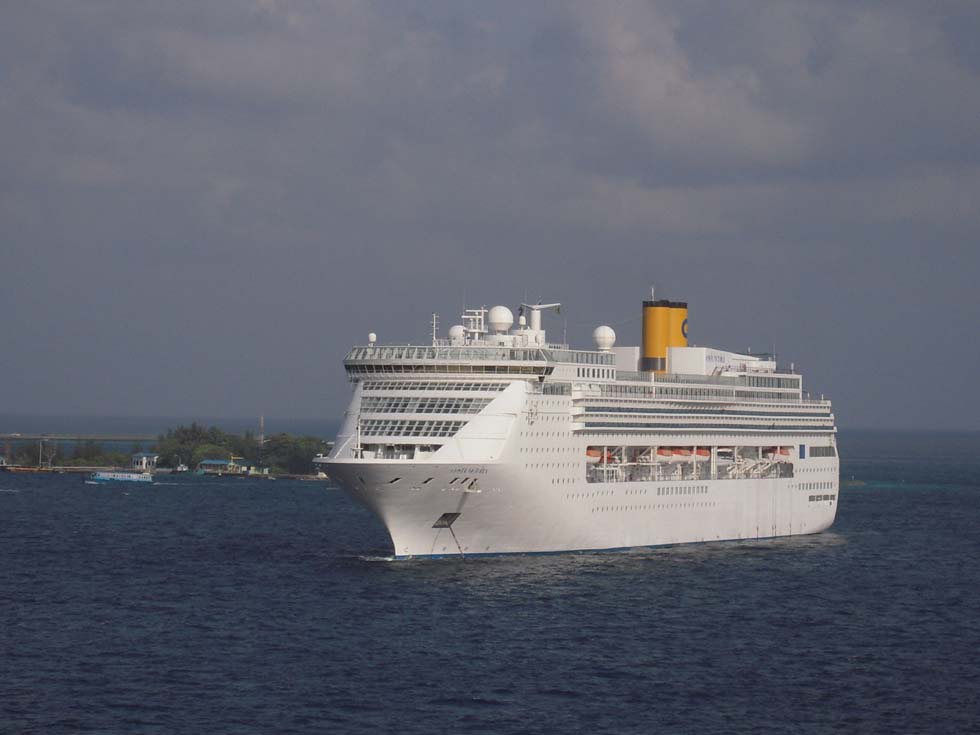
“Costa Victoria” at Male, Maldives, 2012 (WS)
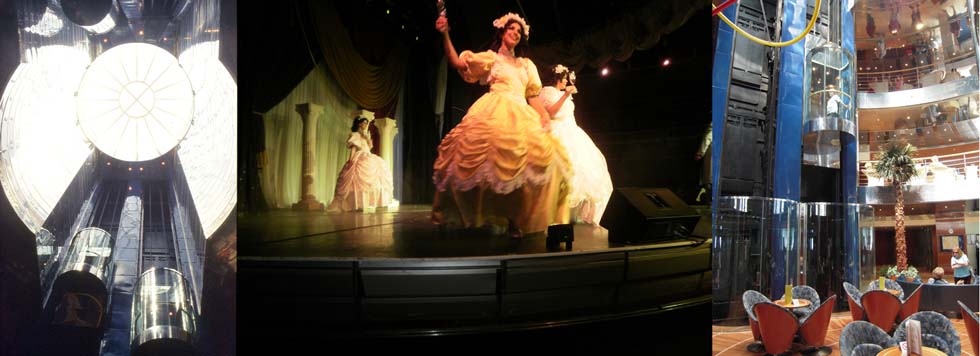
“Costa Victoria”, the Costa Victoria Team and the atrium (WS)
From 1997 the Carnival Corporation and Airtours bought shares in Costa Crociere and in 2000 Carnival became the whole owner. In that year the “Tropicale” (33,674 gt) was taken over from Carnival Cruise Lines. Renamed “Costa Tropicale”, she lost the Carnival funnel and in 2005 she was transferred to P&O Australia. The nice “Westerdam” of Holland America Line, the former “Homeric” (1986/42,092 gt), built by Meyer Werft for Home Lines, was added to the fleet in 2002 as “Costa Europa”.
Much more important was the change from a mixed fleet to new classes of megaships. One by one, the old ships were given away. The interiors were now styled by Joe Farcus. With the “Costa Atlantica” the three-level theatre and with the “Costa Fortuna” the 9-deck ‘Atrio’ was introduced, each dedicated to a different theme. The Venetian Caffe Florian of the “Costa Atlantica”, L’Olimpo spettacoloso of the “Costa Serena”, a monumental bronze statue by Fernando Botero and the ‘Sphera’ of Arnaldo Pomodoro, adorning the public space of the “Costa Luminosa” and “Costa Deliziosa”, are among the highlights.
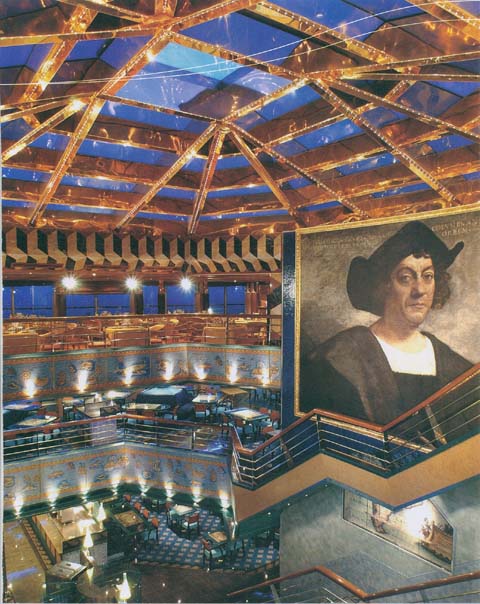
“Costa Fortuna” (Costa advertisement)
|
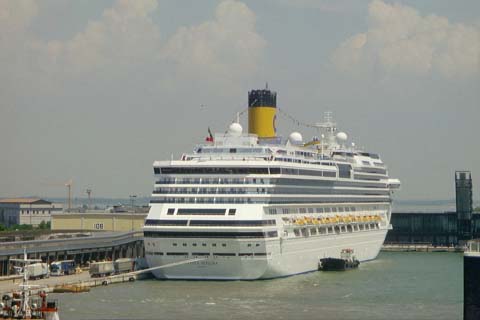
“Costa Serena”, Venice 2007 (WS)
|
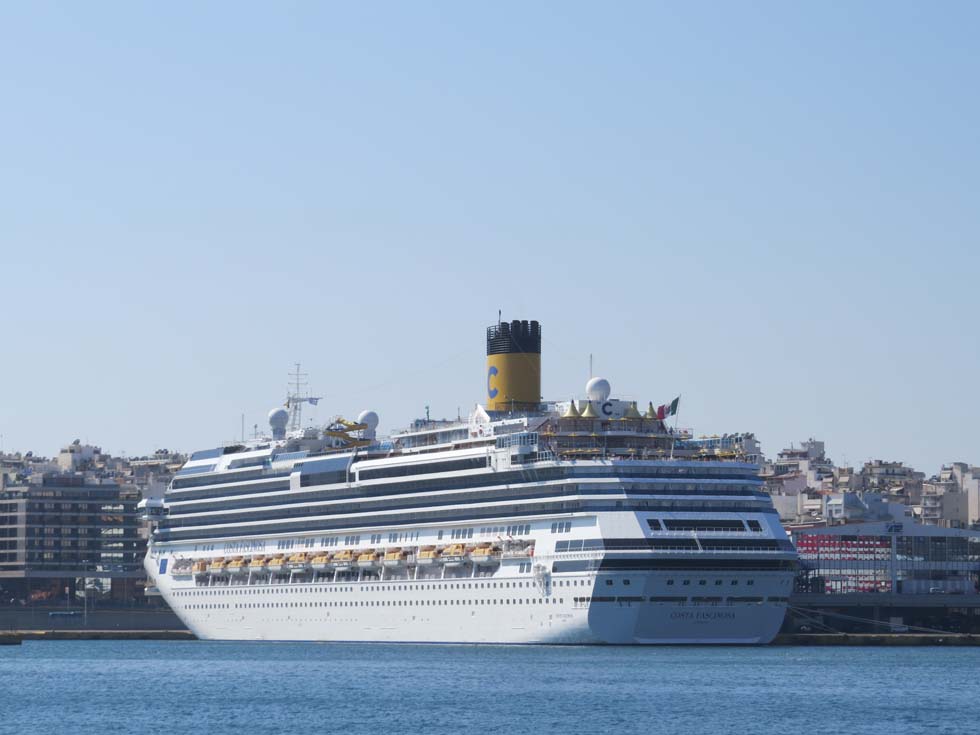
“Costa Fascinosa”, Piraeus 2014 (WS)
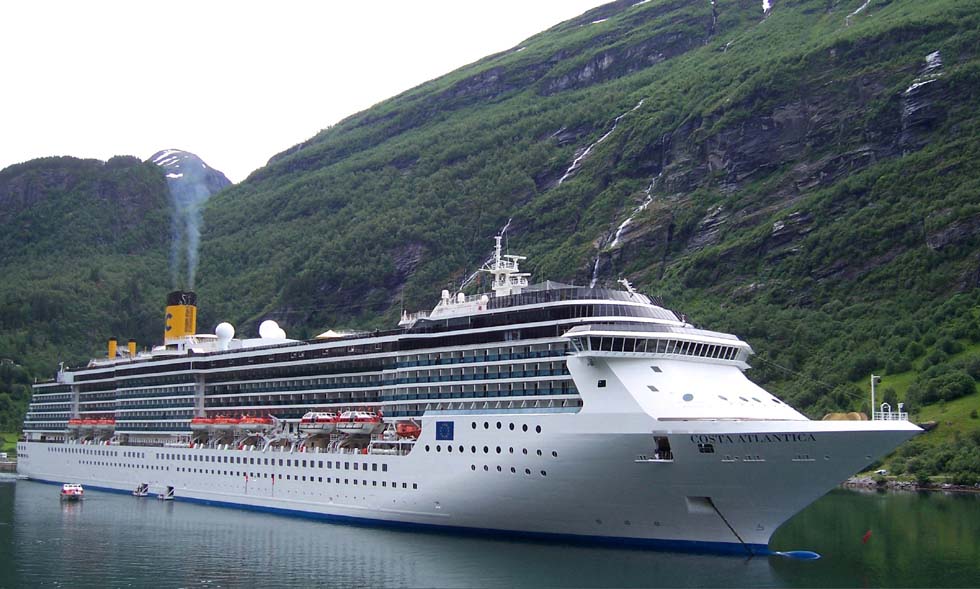
“Costa Atlantica”, Gairanger Fjord, Norway 2007 (Theo Schmidt)
While the pod-driven “Costa Atlantica” and sister “Costa Mediterranea” were delivered from Kvaerner Masa Yards, the further series were built in Italy by Fincantieri, the next two based on Carnival series. The “Costa Concordia” made headlines in 2012, when she capsized after having rammed on January13 a reef at the island Giglio off the Italian coast, whereupon Chairman Pier Luigi Foschi expressed his regret by a letter sent to all the Costa clients. In 2014 the wreck was tugged away for being scrapped. The “Costa Luminosa” with pod-propulsion was described as following the design principles of the “Costa Atlantica” and the Fincantieri-built Vista class of Holland America. A variation of Carnival’s Dream class was intended with the 132,500-ton megaship class, built by Fincantieri, too. The new fleet has strengthened Costa’s position as one of the two biggest “European” brands and number three within the Carnival group, ahead of Holland America.
Ships delivered from 2000:
85,000-ton megaships
Kvaerner Masa Yards, prototype for Carnival’s Spirit class, with 2 Azipods: “Costa Atlantica” (2000), “Costa Mediterranea” (2003/85,619 gt each).
103,000-ton megaships
Fincantieri, based on Carnival’s Destiny class: “Costa Fortuna” (2003), “Costa Magica” (2004).
114,500-ton megaships
Fincantieri, based on Carnival’s Conquest class: “Costa Concordia” (2006), “Costa Serena” (2007), “Costa Pacifica” (2009), “Costa Favolosa” (2011), “Costa Fascinosa” (2012).
92,600-ton megaships
Fincantieri, 2 pods: “Costa Luminosa” (2009), “Costa Deliziosa” (2010).
132,500-ton megaships
Fincantieri: “Costa Diadema” (2014) …
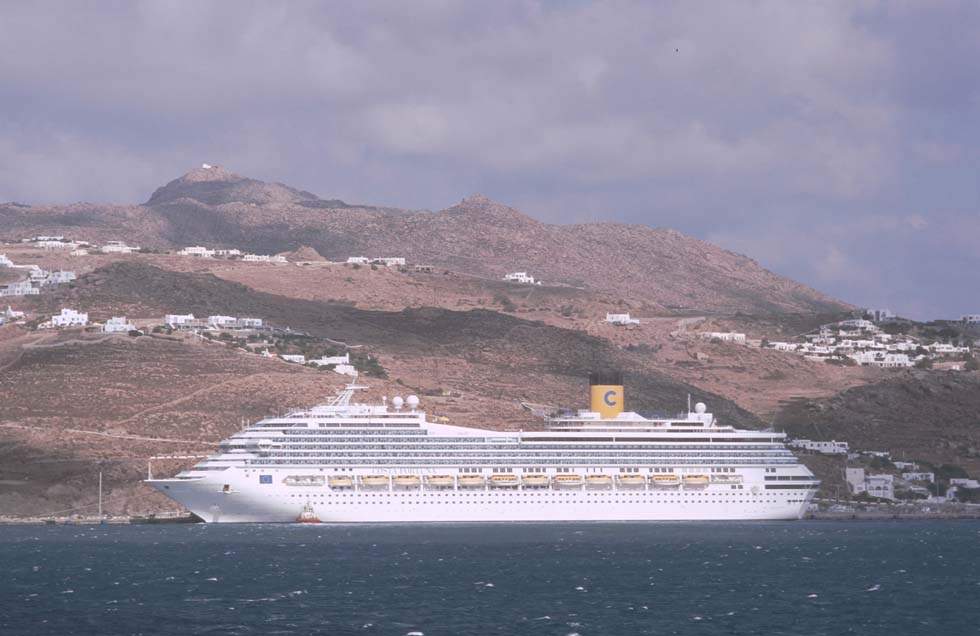
“Costa Fortuna”, Mykonos 2008 (WS)
Download this picture with 1500 x 1000 pix, 300 dpi

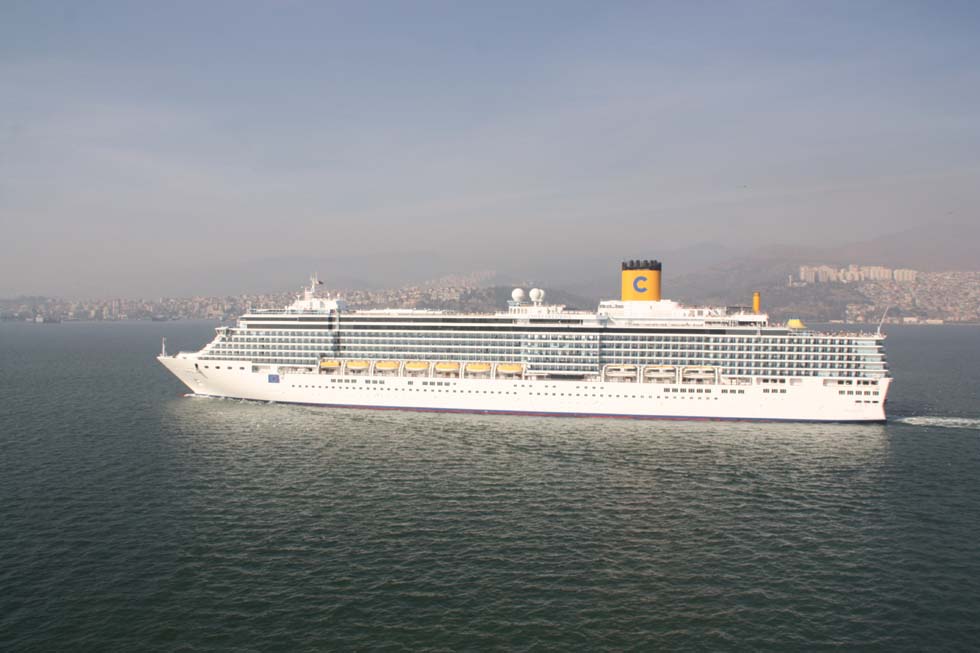
“Costa Deliziosa” at Izmir, Turkey 2013 (Anton Soelch)
|